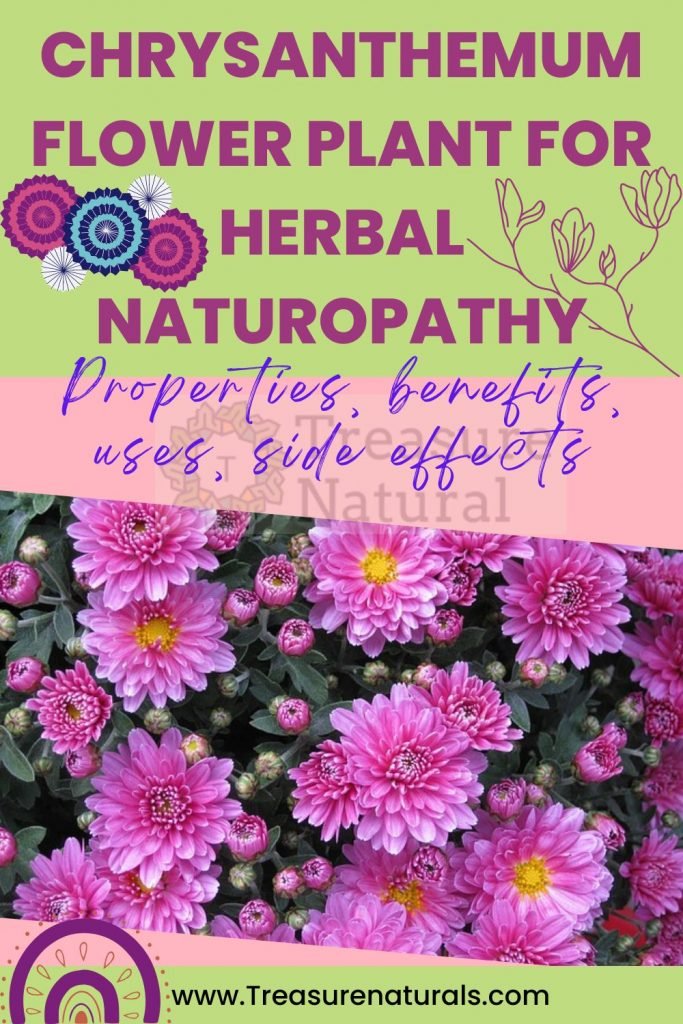
Chrysanthemum, known as an ornamental flower, has important therapeutic properties. It is, in fact, antiviral and antibacterial, useful against colds, flu, infections of the respiratory tract and urinary tract. Let’s find out better.
Properties and benefits of Chrysanthemum
Chrysanthemum flowers are rich in important active ingredients useful for health, such as flavonoids, saponins and caffeic acid. Furthermore, in the flower petals it is possible to find chlorogenic acid which is able to stimulate the metabolism, regulate blood sugar and promote the reduction of fat.
Chrysanthemum is useful in case of infections and diseases deriving from viruses and bacteria, therefore it represents a valid aid in the treatment of colds, respiratory infections, coughs, fever, flu, bladder and kidney infections.
Chrysanthemum is useful in case of anxiety, against irritation and nervous tension and also in case of confusion and nervousness. Its use is beneficial against varicose veins, for the health of the arteries and to regulate blood pressure.
Chrysanthemum flowers have an antioxidant, purifying, anti-inflammatory, anti-fever and pain-relieving action. Further therapeutic indications configure chrysanthemum as a useful remedy in the presence of hypercholesterolemia and hypertriglyceridemia, varicose veins, hemorrhoids and microcirculation disorders.
How to use
The whole plant is used in phytotherapy. For therapeutic purposes, a drink can be prepared, Chrysanthemum tea, rich in beta carotene, calcium, magnesium and iron.
Chrysanthemum tea has an antipyretic effect, useful for lowering fever, relieving rashes in case of sunstroke and heat stroke. Chrysanthemum tea relieves headaches, neuropathic pain and toothache. Excellent aid as a digestive and as a liver detoxifier.
The infusion or Chinese tea prepared with the dried petals of the chrysanthemum regulates blood pressure, relieves headaches and muscle aches, fights colds.
Chrysanthemum tea is prepared in the following way: put 1-2 teaspoons of dried flowers in 1 cup of boiling water and leave to infuse for at least 20 minutes, filter and sweeten with raw honey if desired.
Contraindications of Chrysanthemum
Chrysanthemum is to be avoided during pregnancy, during the lactation period, in case of allergies and in the presence of gastritis and peptic ulcer.
Description of the plant
Chrysanthemum ( Chrysanthellum americanum ) is a herbaceous plant belonging to the Asteraceae family. Small from 10 to 30 cm, with prostrate, ascending or erect branches. The leaves are bi-tripinnate and have long petioles. The small yellow-orange flowers grow larger with fruit growth and are placed on a 5-6 cm peduncle.
Habitat of the Chrysanthemum
Chrysanthemum is a plant native to Peru and Bolivia that is easily found in the mountains but also in the African savannah.
Its natural habitat is uncultivated places and abandoned roads and, usually, it is found near shallow pools of water.
Background

Chrysanthemum is also known as a golden flower. It was already known in China in 400 BC and was then spread throughout the West in 1700, mostly for ornamental purposes.
In Italy the chrysanthemum is known as the flower of the dead, while altiove is instead considered a symbol of life and peace.
The cysanthemum is the national flower of Japan.






